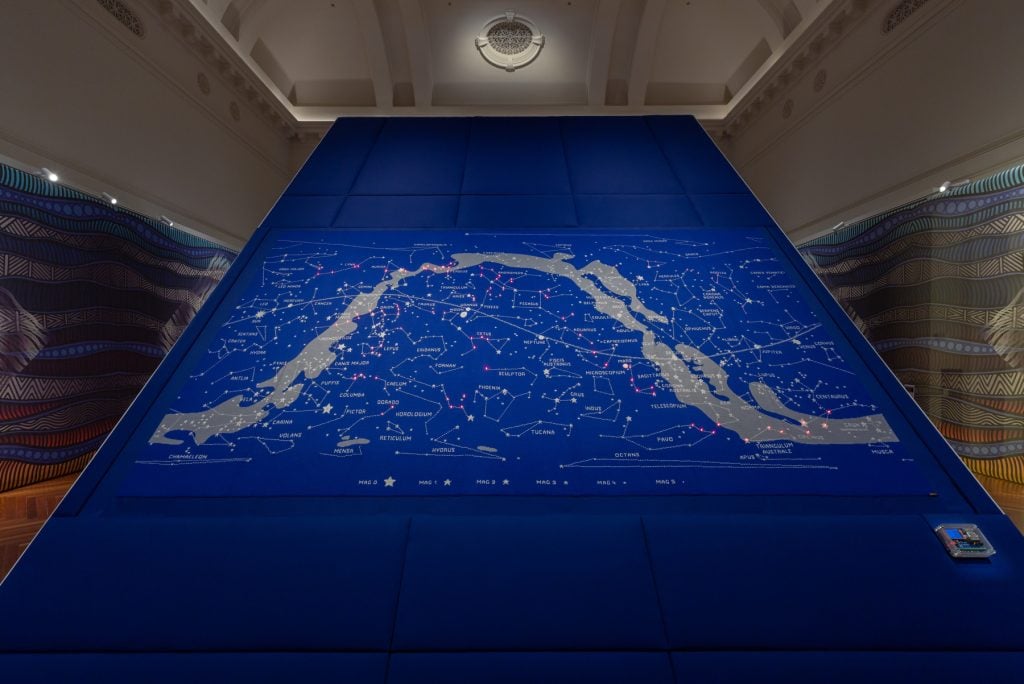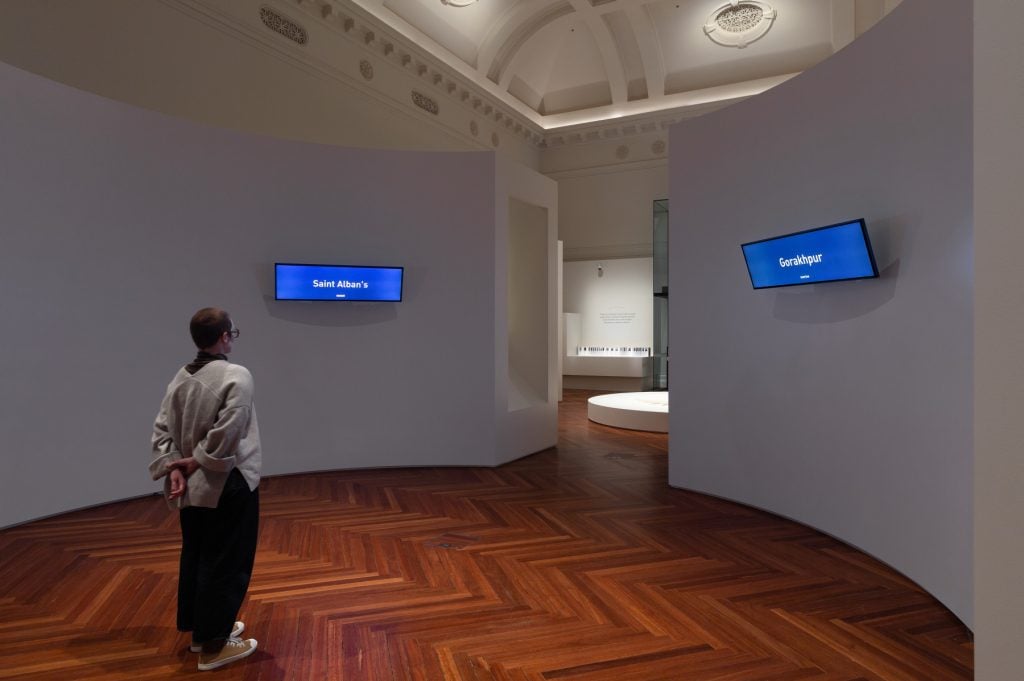The Library’s newest exhibition, Handmade Universe: From craft to code and the spaces between, celebrates the rewards of making and the limitless scope it offers for invention and enquiry.
Ranging across disciplines – from craft to coding and from astronomy to botany – the works in this exhibition show how quiet and intimate self-led discovery can be a powerful way to connect with the universal themes of place, culture and identity.
This unique combination of contemporary art and remarkable items from State Library Victoria and other collections was curated by Linda Short and Bethan Johnson.
We chatted to Linda Short about how the exhibition came to be, and the best way to experience the stories it tells.
Hi Linda! To start us off, we’d love to hear how the idea of Handmade Universe came about and how it changed throughout its conception?
I co-curated this exhibition with my colleague Bethan Johnson. Our ideas took shape when the Library received an extraordinary donation to the maps collection that showed how scientific innovation can arise inside of domestic spheres rather than academic ones.
That donation was a giant knitted star map called Stargazing, which you can see at the center of the exhibition. It was made by local artist and software engineer Sarah Spencer, who is passionate about combining her talents for crafting and coding to engage people with the STEM disciplines in unexpected ways.
It wasn’t just the impressive size and curious makeup of this map of the constellations that sparked our interest, but how and where Sarah knitted it. Sarah had been experimenting with upcycling vintage home knitting machines for several years since buying one at an op shop for $10. She started re-engineering the machines and wrote a code that transformed one into what she called the Knitting Network Printer.
Sarah did all of this while she was at home with a newborn baby. She wrote the code while adjusting to life as a new parent, when her hands were full, but her mind was craving a different kind of stimulation.
When Sarah explained all this to us, we were inspired to follow a less expected line of enquiry and examine the role of art and craft in scientific pursuits, especially those that happen in domestic spheres and personal spaces. It also prompted us to consider how artists have pushed time-honoured crafts into entirely new realms – not only as forms of expression but as scientific and political tools.
It must have been hard to narrow down the items you wanted to include – what kind of process do you follow when curating?
We wanted this exhibition to highlight how artistic disciplines can teach us about the world as well as scientific ones. We also wanted to show that when art and science intersect, there can be greater scope for innovation and discovery.
This was our through-line when we started researching the Library’s collection. It includes more than 5 million items, so we had no idea what stories and objects we’d find and the direction they’d lead us in.
We were excited early on to unbox several historical textiles which showed how women had engaged with science and new technologies through domestic handcrafts, long before the STEM or STEAM acronym was coined.

It was surprising to find these textiles in the Library’s collection, but it wasn’t surprising to find out they were made by women and that very little was known about the makers. That absence of knowledge motivated us to spotlight the quieter, less celebrated forms of scientific enquiry that happen in domestic or in personal spaces.
Many of the objects in the exhibition reflect and show that women have always been involved in science, in a way that changes with the times. Even hundreds of years ago, when a woman’s sphere was most often the home, there were still ways of thinking in scientific terms and ways of engaging with emerging knowledge and technologies – often through creative pursuits.
What made the commissioned artists stand out to you? And what is the process of commissioning a piece for an exhibition like?
Handmade Universe features both commissioned art works and art works recently purchased for the collection. Together, they bring a range of understandings and insights into the exhibition that are not represented in the Library’s collection. They also offer very different experiences. For instance, the installation Sunset/Sunrise by artist duo Sans façon, lets you stand in the gallery and travel the world in real time, contemplating your position in the cosmos by following the movement of the earth around the sun.
The commissions form a spine through the exhibition and are surrounded with collection items which are brought into constellation with them. Some respond directly to objects from the collection, such as the animation Season of the orchid by Melbourne artist Donna Kendrigan. We met Donna when she was a State Library fellow researching the Library’s Edith Coleman collection. Donna’s research led to the immersive screen work and soundscape in Handmade Universe, which brings to life a fascinating evolutionary riddle.
Dharangalk Biik I Star Country is a striking textile work by Wurundjeri artist Mandy Nicholson who is also a Library fellow. Mandy created a star map that is printed on fabric and wraps the gallery walls. Her design carries enduring knowledge about the interconnection of the skies, waters and layers of the earth in Wurundjeri culture. The colours, shapes and markings weave together the physical, spiritual and cultural elements that make up Country from a Wurundjeri perspective, which Mandy describes in an artist statement accompanying the work.
Mandy considered Sarah’s star map when creating Dharangalk Biik, responding to the colour of blue wool and the river-like shape of the Milky Way that is stitched in grey and seems to flow like water. Mandy also responded to the room itself and wanted her commission to counter the historical and traumatic memory residing within the colonial architecture. She wanted her design to make it feel welcoming and to ‘bring light’ to the room.
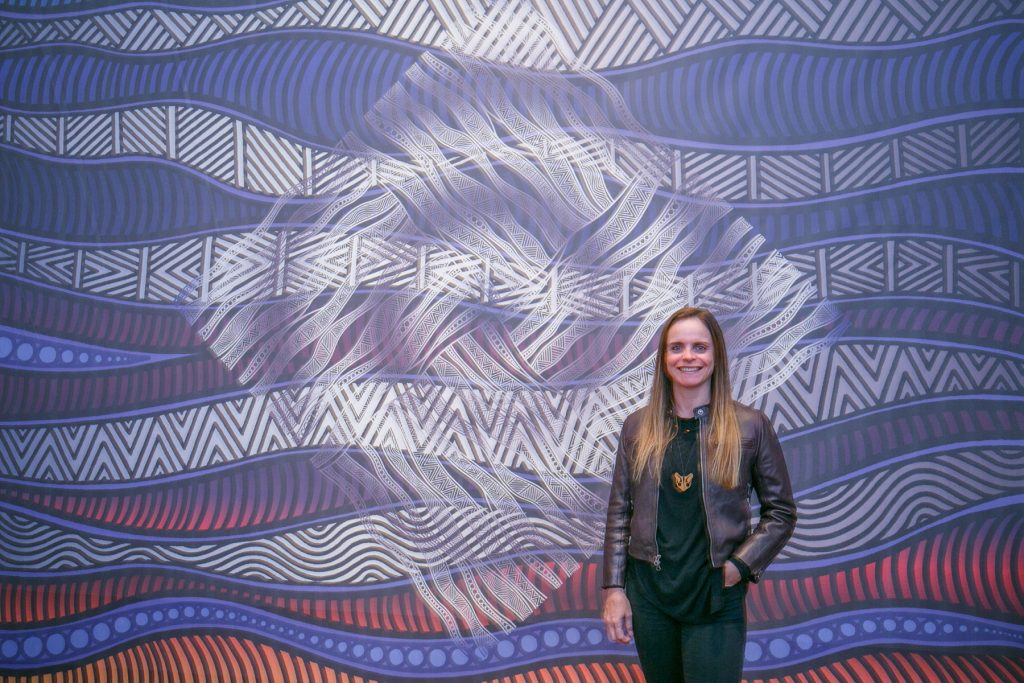
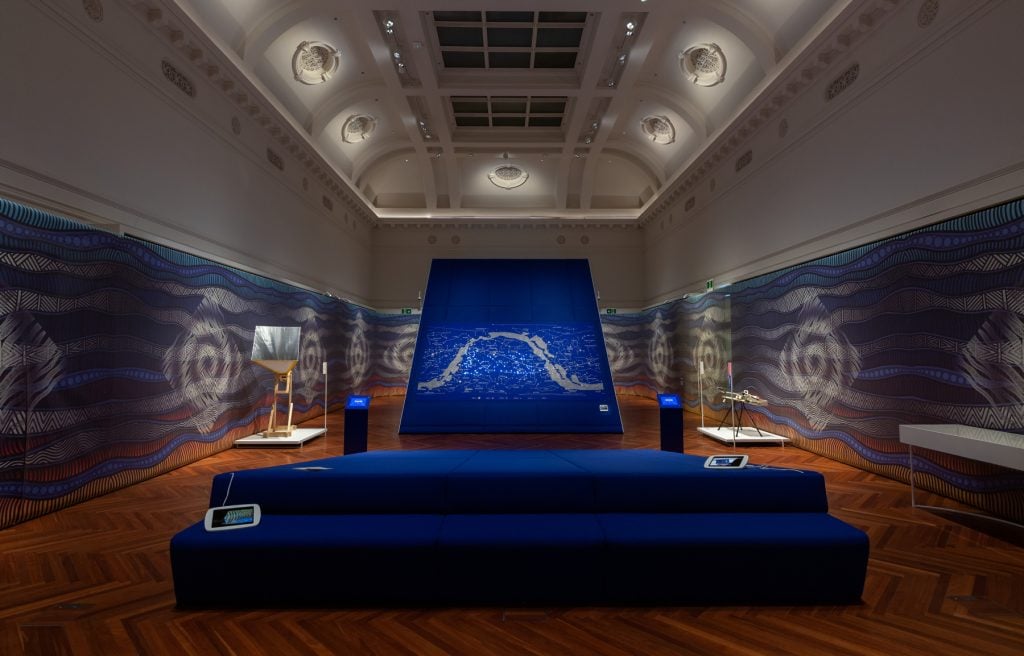
Collaborating with the artists in Handmade Universe was definitely a highlight of the project. Parts of the exhibition were developed during Victoria’s Covid-19 lockdowns which meant many conversations and meetings happened online. That made it even more rewarding when we could be in the gallery and experience the final works being installed for the exhibition.
We know it’s an impossible question, but do you have a favourite story from within Handmade Universe?
We wanted the exhibition to shift perspectives on familiar subjects and included objects that would inspire alternative ways of connecting with the stories and themes. The Playtex bra is a good example. The bra is meant to grab attention and school us in the little-known but critical role of undergarment makers in achieving the first moon walk during NASA’s successful Apollo 11 mission in 1969.
Seamstresses employed by the company behind Playtex re-directed their skills to help engineer the Apollo moon suit when the company beat military competitors to win the NASA contract. The cutting-edge materials, technologies and production techniques that had revolutionised Playtex bras and girdles for high street shoppers were applied to producing a moon suit that would keep astronauts safe, supported and comfortable in space.
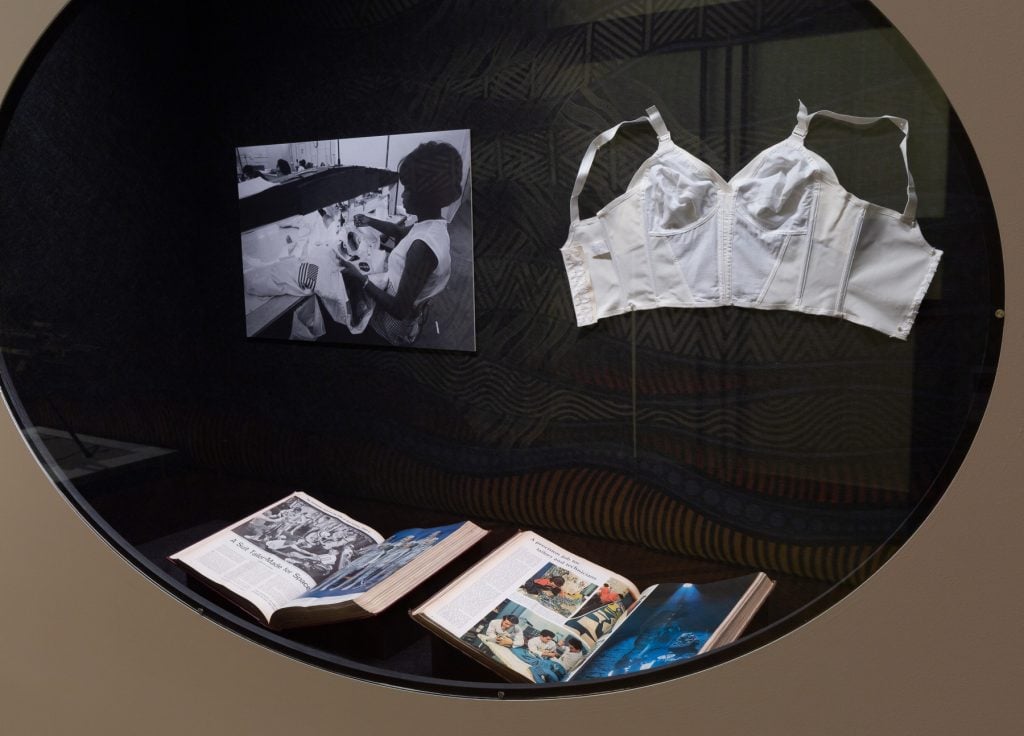
Front: ‘A suit tailor-made for space’, Life 1 August 1960; ‘A precision job for tailors and technicians’, Life 9 August 1968
Photography by Christian Capurro
When we started to research historical records, we realised that little was documented about the collaboration between the NASA engineers and Playtex seamstresses. However, copies of LIFE magazine from our collection included articles reporting on the development of the moon suit – one featuring photographs of the seamstresses working with engineers on the assembly line.
It was work that demanded precision sewing and most of the suit could only be manufactured and assembled by hand. The suits had an astounding 21 layers of material and insulating fabrics – a misplaced stitch by even a hairs width could be life threatening in space.
Finishing touches to the outer shell of the suits were machine stitched, and another photograph in the exhibition – sourced from the Smithsonian archives – shows team leader Hazel Fellows operating one of the two sewing machines they affectionately named Big Moe and Sweet Sue. The seamstresses had hacked and reprogrammed the machines to give them greater control when using the foot pedals and fire one stitch per footfall.
When we learnt about the re-programming we knew we had to feature this story in the exhibition near Sarah’s star map and knitting machine – here were two examples of women re-engineering machines to achieve something unprecedented with needlework.
The Playtex story also looped us back to our very first conversation with Sarah, when she told us that attached to her knitting machine at home was a NASA button badge bearing the motto ‘Failure is not an option’!


